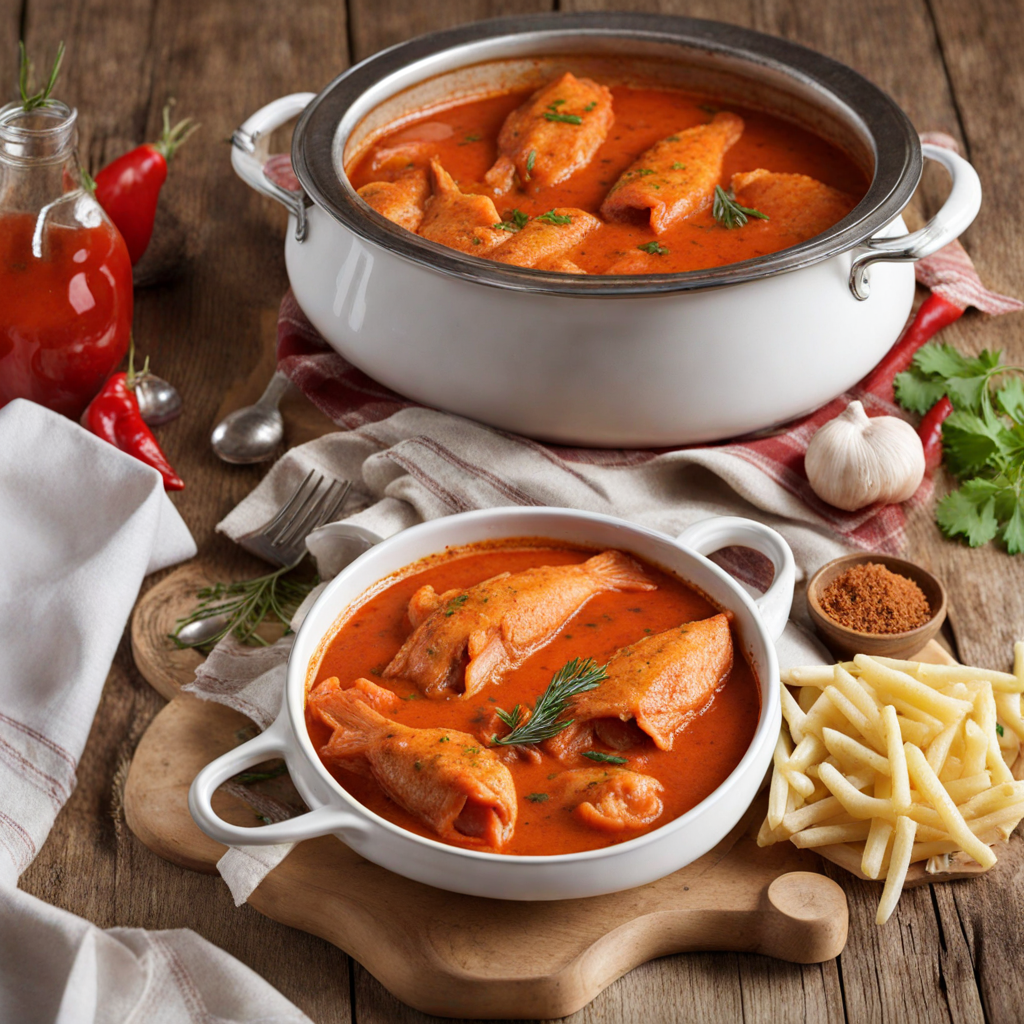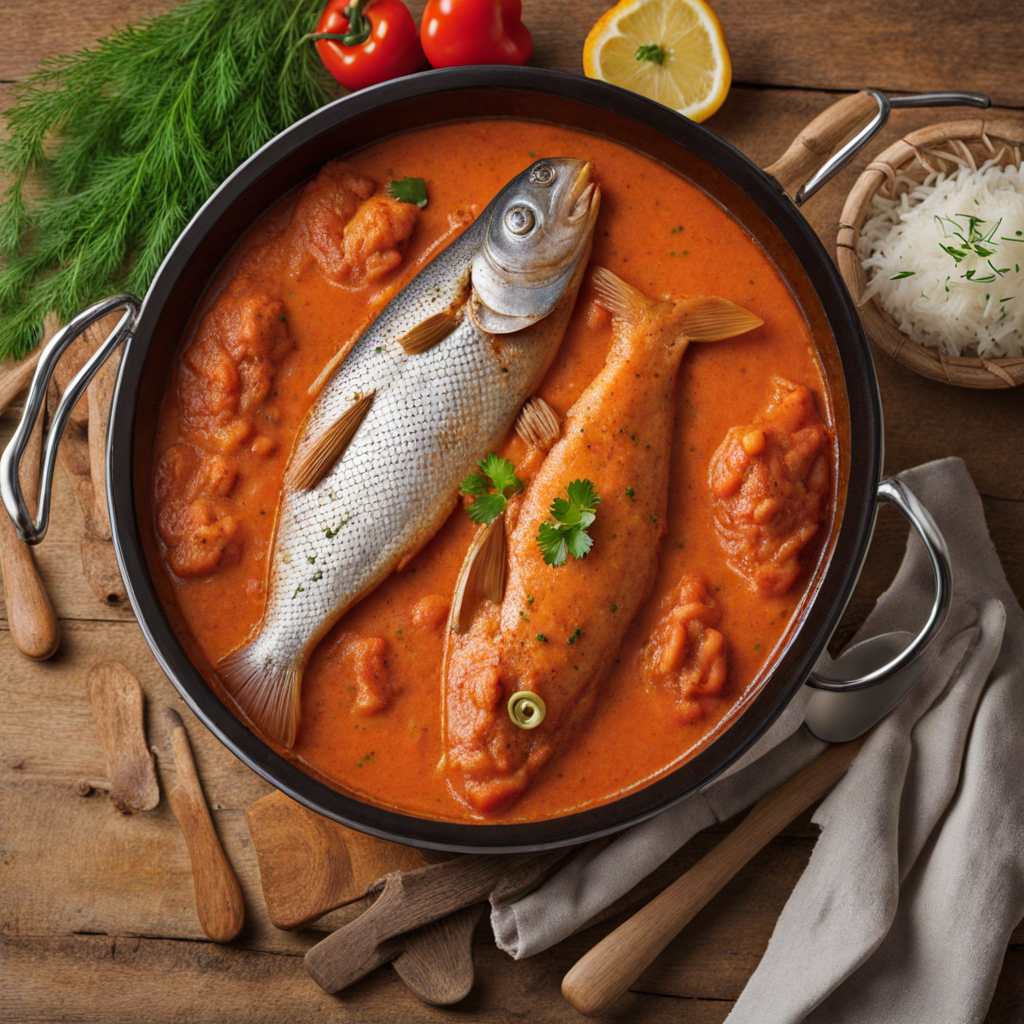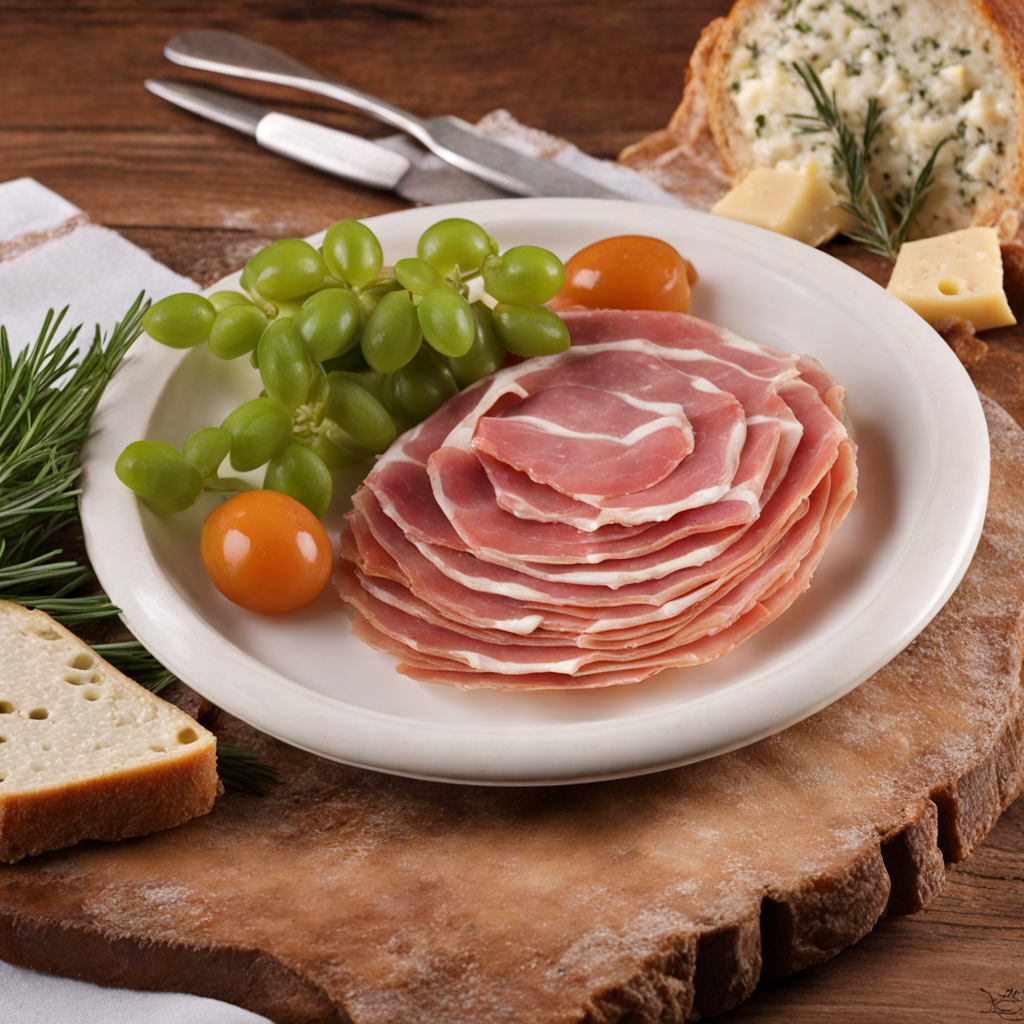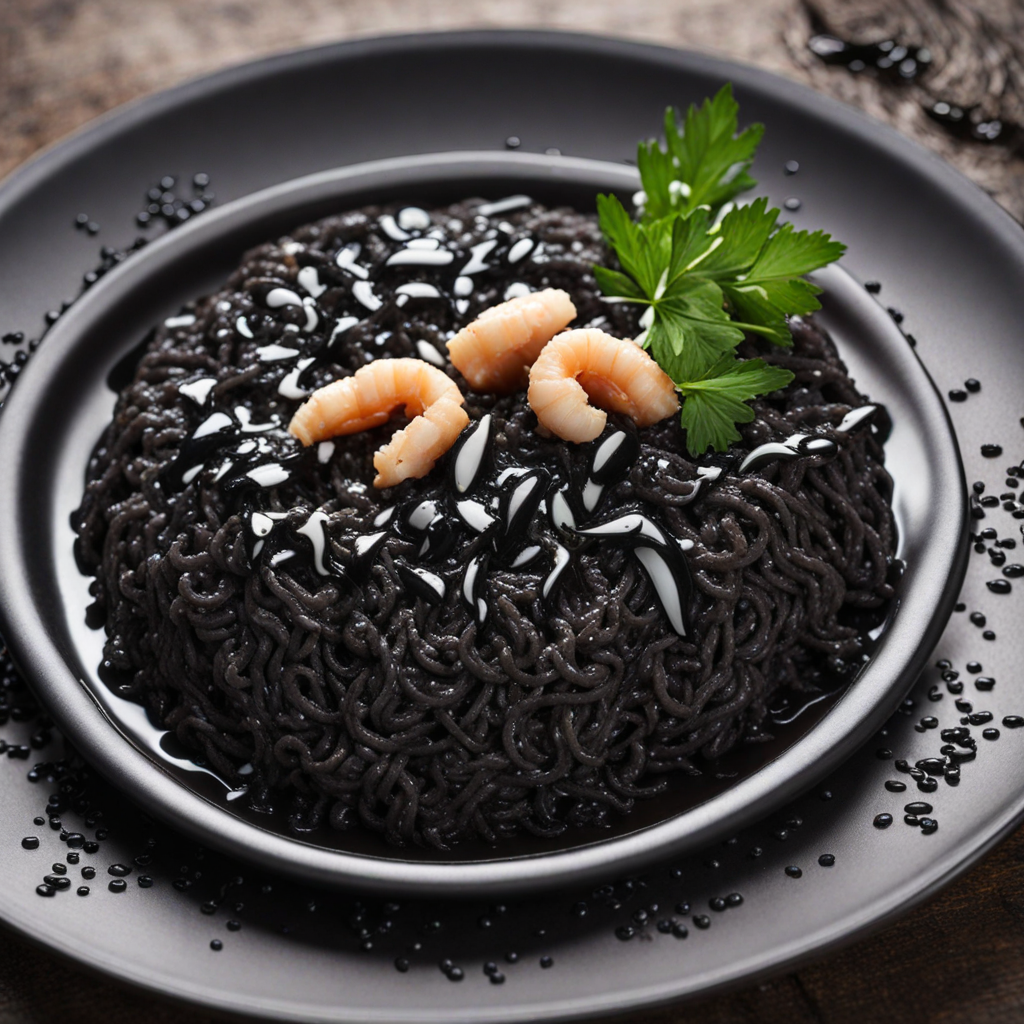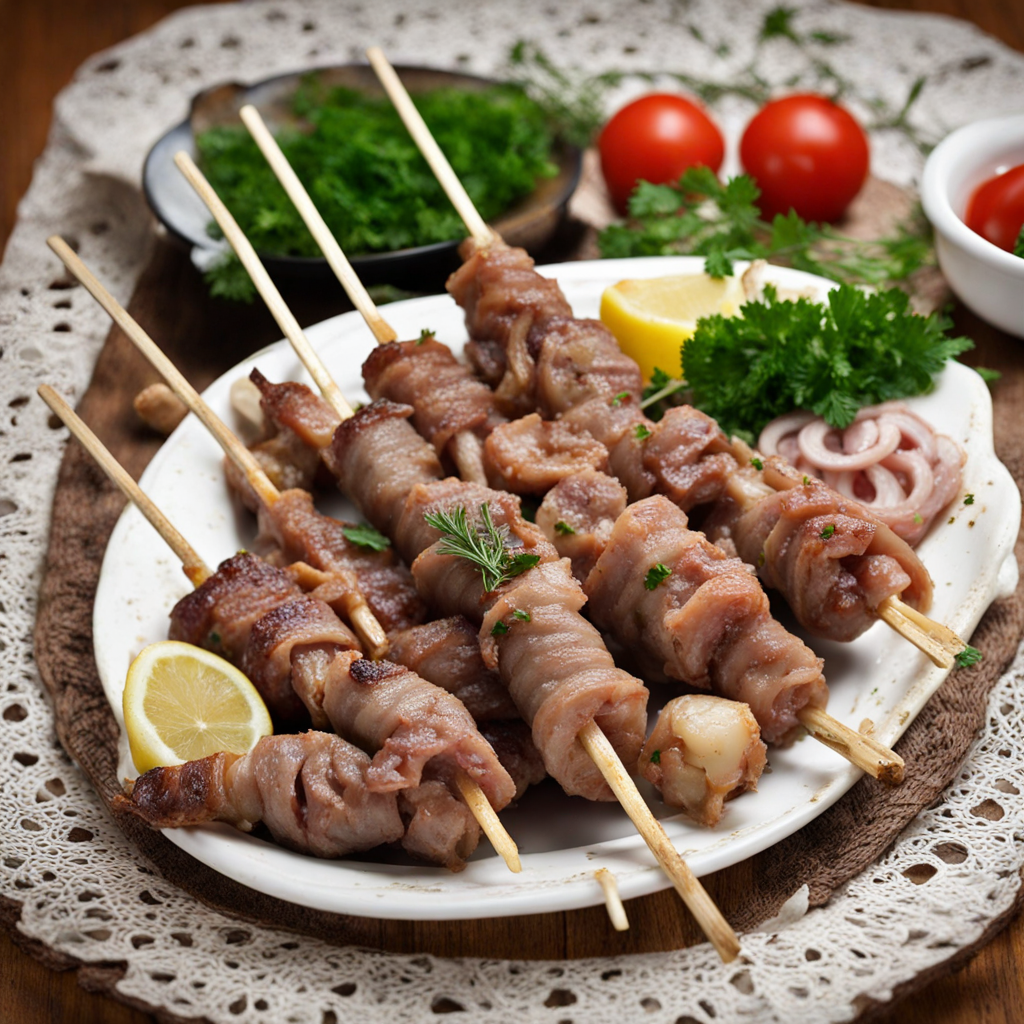Fish Paprikash
Fish Paprikash is a delightful Croatian dish that beautifully showcases the region's love for fresh seafood and vibrant flavors. This dish typically features tender pieces of fish, often caught from the Adriatic Sea, simmered in a rich, paprika-infused sauce. The use of sweet and smoky paprika is essential, as it provides a warm, aromatic depth that complements the natural flavors of the fish. Along with the paprika, ingredients like onions, garlic, and sometimes tomatoes create a savory base that elevates the overall taste profile of the dish. As the fish cooks, it absorbs the spices and flavors, resulting in a tender and succulent texture that melts in your mouth. Fish Paprikash is often served with a side of hearty polenta or crusty bread, allowing diners to soak up the delectable sauce. The dish is not only a feast for the palate but also for the eyes, as the vibrant red hue from the paprika creates a stunning contrast against the freshness of the fish. This dish is a perfect representation of Croatian cuisine, reflecting its coastal heritage and the emphasis on using local ingredients. Whether enjoyed at a seaside restaurant or prepared at home, Fish Paprikash offers a unique culinary experience that transports you to the sunny shores of Croatia with each bite. It's a must-try for anyone looking to explore new flavors and indulge in the rich culinary traditions of this beautiful country.
How It Became This Dish
Riblji Paprikaš: A Culinary Journey through Croatia’s Flavorful Waters #### Origins and Historical Context Riblji paprikaš, translated as "fish paprikash," is a beloved dish from Croatia that encapsulates the rich culinary traditions of the region, particularly along the banks of the Danube River and in the coastal areas of the Adriatic Sea. Its roots lie in the diverse cultural tapestry of the Balkans, where various influences have merged over centuries due to trade, migration, and historical events. The dish is primarily associated with the Slavonian region, where rivers teem with fish, making it a staple for local communities. The origins of riblji paprikaš can be traced back to the traditional paprikash, a quintessential Hungarian stew characterized by its use of paprika, which was introduced to the region by the Ottomans in the 16th century. As paprika became a central spice in many Central and Eastern European cuisines, it blended seamlessly with local ingredients and culinary practices, leading to the creation of riblji paprikaš. #### Ingredients and Preparation At its core, riblji paprikaš is a fish stew made with a variety of freshwater fish, typically including carp, catfish, or pike, and seasoned with a generous amount of paprika. The basic preparation involves sautéing onions and then adding the paprika, which gives the dish its signature color and flavor. The fish is then added along with tomatoes, bell peppers, and sometimes potatoes or other vegetables, allowing the flavors to meld together in a slow simmer. One of the key aspects of riblji paprikaš is its versatility. While the traditional recipe emphasizes the use of local fish and spices, each household may have its own variation, influenced by family traditions or the availability of ingredients. This adaptability has allowed riblji paprikaš to evolve over time and remain a cherished dish in Croatian cuisine. #### Cultural Significance Riblji paprikaš goes beyond mere sustenance; it is a dish steeped in tradition and communal significance. In Croatia, food plays a vital role in social gatherings and celebrations. Riblji paprikaš is often prepared for festive occasions, family reunions, and local festivals, where it is served alongside homemade bread and polenta. It symbolizes hospitality and the gathering of loved ones, as families come together to share stories and enjoy a hearty meal. The dish also has regional variations that reflect local customs and practices. For example, in Slavonia, riblji paprikaš may be served with a side of freshly baked bread, while in coastal areas, it might be paired with a glass of local white wine. This adaptability showcases how riblji paprikaš has become a canvas for expressing regional identities and culinary creativity. #### Development Over Time As Croatia has undergone political and social changes throughout its history, so too has riblji paprikaš evolved. During the Austro-Hungarian Empire, culinary exchanges flourished, and the dish began to gain prominence in urban areas as it was introduced to a broader audience. This exposure led to variations that incorporated different spices and techniques, further enriching the dish's profile. In the 20th century, globalization and modernization began to influence culinary practices across Croatia. With the rise of tourism, riblji paprikaš became a featured dish in restaurants catering to international visitors, prompting chefs to experiment with presentation and flavor combinations. While some purists advocate for traditional recipes, contemporary chefs have embraced innovation, introducing elements like herbs, citrus, and even fusion with other cuisines, such as Italian or Mediterranean cooking. Despite these changes, riblji paprikaš remains a symbol of Croatian identity and cultural heritage. It is often featured in culinary festivals celebrating local traditions, such as the Fish Festival in the town of Vinkovci, where chefs showcase their skills and compete to create the best riblji paprikaš. These events not only honor the dish but also serve as a platform for passing down recipes and cooking techniques to younger generations. #### Contemporary Appreciation and Revival In recent years, there has been a resurgence of interest in traditional Croatian dishes, including riblji paprikaš, as people seek to reconnect with their culinary roots. The farm-to-table movement has also gained traction, with an emphasis on using locally sourced ingredients that enhance the flavors of traditional dishes. This has led to a renewed appreciation for riblji paprikaš, as chefs and home cooks alike strive to honor the dish's history while also making it relevant for a modern audience. Cookbooks and culinary blogs dedicated to Croatian cuisine have emerged, featuring riblji paprikaš as a highlight. These platforms offer recipes, cooking tips, and stories that celebrate the dish's cultural significance. Additionally, social media has played a vital role in showcasing the beauty of riblji paprikaš, with food enthusiasts eager to share their culinary creations, thereby fostering a sense of community around this cherished dish. #### Conclusion Riblji paprikaš is more than just a dish; it is a culinary narrative that weaves together history, culture, and community. From its origins in the rivers of Slavonia to its contemporary interpretations in Croatia's vibrant food scene, riblji paprikaš serves as a testament to the resilience and adaptability of culinary traditions. As it continues to evolve, the dish remains a cherished symbol of Croatian identity, inviting both locals and visitors to partake in its flavorful history and celebrate the bonds it creates over shared meals. Whether enjoyed at a family table or in a bustling restaurant, riblji paprikaš offers a taste of Croatia's rich heritage, ensuring its place in the hearts and stomachs of all who experience it.
You may like
Discover local flavors from Croatia


